
Supercharge your lead generation with a FREE Google Ads audit - no strings attached! See how you can generate more and higher quality leads
Get My Free Google Ads AuditFree consultation

No commitment
Supercharge your lead generation with a FREE LinkedIn Ads audit - no strings attached! See how you can generate more and higher quality leads
Get My Free Google Ads AuditFree consultation

No commitment
Supercharge your lead generation with a FREE Meta Ads audit - no strings attached! See how you can generate more and higher quality leads
Get My Free Google Ads AuditGet My Free LinkedIn Ads AuditGet My Free Meta Ads AuditFree consultation

No commitment
Supercharge your lead generation with a FREE Google Ads audit - no strings attached! See how you can generate more and higher quality leads
Get My Free Google Ads AuditFree consultation

No commitment
In today's complex marketing landscape, effective B2B marketing requires a strategic mix of both online and offline channels tailored specifically for the wholesale seafood industry. Google Ads play a critical role by capturing high-intent prospects at the exact moment they're searching for solutions, effectively bridging the gap between broader awareness efforts and your sales process. For wholesale seafood businesses, Google Ads represent a powerful opportunity to connect with decision-makers at their precise moment of need and to complement other marketing channels through strategic retargeting. However, many businesses face challenges like missing high-value prospects due to lack of CRM tracking, which can be mitigated by utilizing modern tracking solutions to ensure all potential leads are accounted for.
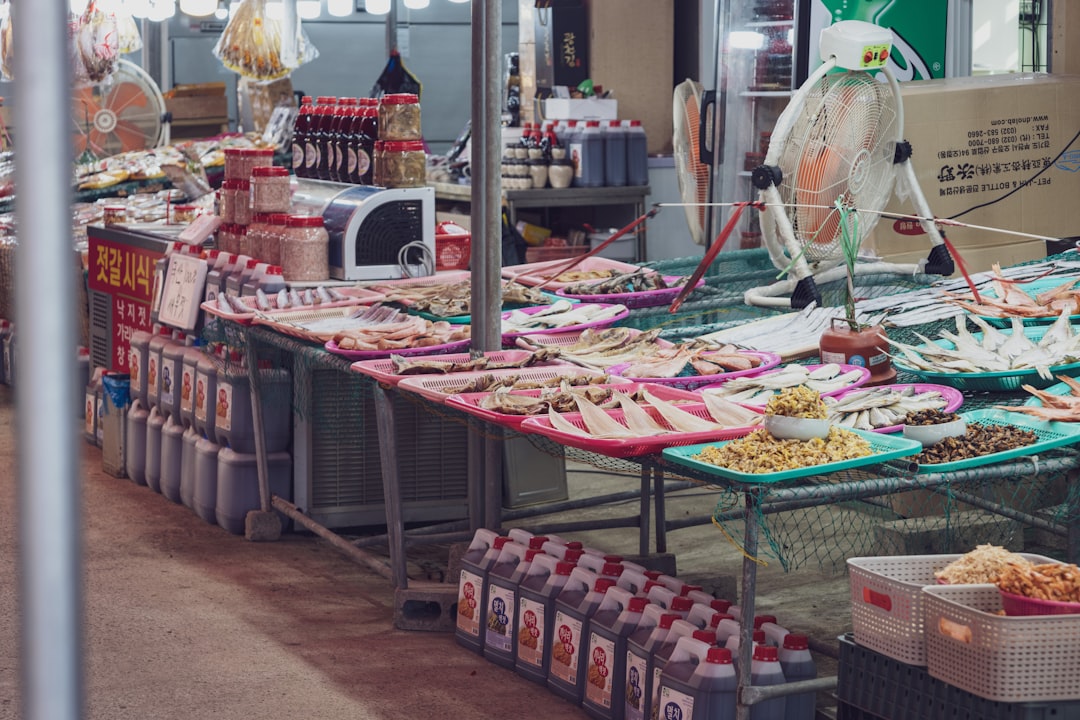
Wholesale seafood suppliers face unique challenges in identifying and converting high-value leads. Maximizing paid search effectiveness requires a blend of industry-specific keyword targeting, advanced audience segmentation, and seamless lead management to ensure every opportunity is captured.
This step-by-step guide delivers a proven framework for integrating Google Ads into your broader seafood marketing strategy. Each section draws on the latest digital best practices tailored for B2B seafood advertising, helping you reach culinary professionals, restaurant groups, and institutional buyers with precision and scale.
Keyword research is foundational for any successful Google Ads for Wholesale Seafood strategy. Focus on commercial intent phrases like “wholesale seafood suppliers,” “bulk shrimp for restaurants,” and “sustainable seafood distributor.” For inspiration and deeper insights, explore high-performing keywords for wholesale suppliers. Segment your keyword lists by product type, certifications, and target buyer verticals. Regularly assess search term reports to identify new opportunities and refine negative keywords, ensuring every click aligns with qualified lead criteria.
Effective targeting goes beyond broad demographic filters. Use firmographic segmentation to isolate decision-makers within restaurants, hospitality groups, and institutional foodservice. Integrate behavioral signals—such as recent visits to seafood industry events or engagement with related content—to develop dynamic audiences that evolve as leads move through the sales funnel. As audiences progress, advanced solutions automatically update segments so that tailored messaging always reaches the right contact at the right time.
Design landing pages for conversion, not just information. Feature product images, certifications, and logistics capabilities, with concise calls to action like “Request a Sample” or “Get Wholesale Pricing.” Use lead forms that capture relevant buyer information, and provide downloadable spec sheets or case studies to help procurement teams justify their choice internally. Advanced conversion tracking bridges online and offline activity, ensuring you can attribute leads to specific ads and keywords, even when deals close through traditional channels.
Speed of follow-up directly impacts lead conversion rates in wholesale seafood marketing. Automated lead routing and real-time notifications allow sales teams to connect with interested buyers immediately. By syncing enriched audience data and new leads directly into your CRM and Google Ads, marketing teams ensure no opportunity slips through the cracks. Integration with CRM systems like HubSpot and Salesforce streamlines workflows and powers more personalized, timely engagement.
Monitor metrics such as click-through rate, cost per lead, and conversion volume to assess the health of your seafood industry PPC campaigns. Use advanced attribution models to understand which keywords, ads, and touchpoints deliver the highest value leads. Continuously adjust budgets and targeting based on evolving market conditions and real-time performance data. Automated systems can identify when a high-potential account is in-market, instantly shifting spend and creative focus to maximize results.
By blending paid search with real-time audience tracking, dynamic segmentation, and seamless CRM integration, B2B seafood wholesalers can transform Google Ads from a cost center into a high-performance lead engine. If you’re ready to capture, nurture, and convert the most valuable seafood buyers in the market, get started for free with Sona.
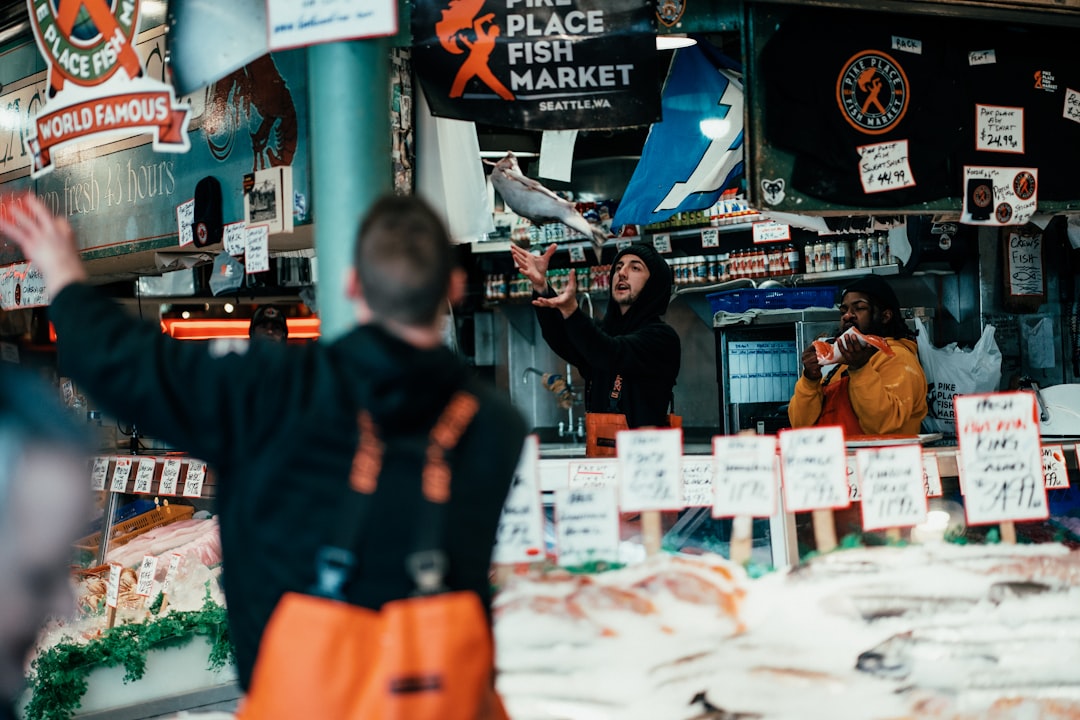
Wholesale seafood suppliers operate in a market where timing and precision drive profitability. Google Ads allows these businesses to reach decision-makers during critical procurement windows, ensuring their products are top-of-mind when urgency peaks.
Targeted advertising captures the attention of plant managers and procurement heads actively searching for seafood products and logistics solutions. By designing campaigns tailored to urgent supply demands, marketers can deliver immediate value and secure high-volume contracts before competitors are considered.
Expanding visibility in new and emerging regions is vital for growth. Google Ads' geographic targeting ensures messaging reaches the right buyers, facilitating market entry and supporting sustained sales in previously untapped territories.
Segmenting campaigns by firmographic data enables messaging that reflects the unique operational needs of specific seafood industry segments. This approach drives higher engagement, as content is immediately relevant to the professional priorities of each audience.
With advanced audience identification, marketers can move beyond anonymous website visits to pinpoint companies and contacts expressing strong buying intent. As a result, budgets can be focused on in-market accounts, increasing the likelihood of converting high-value leads and improving overall ROI for wholesale seafood marketing initiatives.
Wholesale seafood marketers benefit from a range of Google Ads campaigns, each designed to address a specific stage of the B2B buying journey. A well-structured campaign mix ensures engagement with buyers at the right moment, whether they are researching suppliers, comparing options, or ready to place bulk orders. For a deeper look at campaign mix and strategies, visit our marketing analytics blog.
A comprehensive Google Ads strategy for wholesale seafood suppliers leverages each campaign type to maximize reach, nurture leads, and drive qualified conversions. Integration between ad platforms and CRM systems ensures that every campaign touchpoint is tracked, enabling full-funnel attribution and continuous optimization of seafood industry PPC and wholesale seafood online marketing efforts. Ready to optimize your campaigns? Get started for free with Sona.

Growth in wholesale seafood marketing depends on reaching niche segments and uncovering overlooked buyer intent. Vertical keyword targeting reveals specialty markets and procurement trends that standard campaigns often miss, allowing for precise alignment with decision-makers in foodservice, retail, and hospitality. For teams seeking to build dynamic, signal-based segments for hyper-personalized outreach, real-time audience tools enable you to target the right decision-makers at the right moment.
Prioritizing competitor gap analysis helps identify new segments and untapped demand where your brand can establish an advantage. By evaluating competitors’ keyword portfolios and ad placements, you can pinpoint high-value opportunities and shape messaging that fills clear market voids. Explore a list of high-performing keywords for wholesale suppliers to guide your targeting, and consult the Sona marketing analytics blog for strategies that support tailored ad groups and landing experiences for underserved buyer needs.
Retargeting plays a crucial role in strengthening engagement, especially when deployed with content like whitepapers, product guides, or industry reports. Wholesale seafood buyers typically require multiple touchpoints before converting, making retargeted ads essential for maintaining visibility and nurturing prospects through the sales cycle. Buyer Journeys can help you map every key interaction and optimize retargeting as leads move through the funnel, ensuring campaigns maintain relevance and improve conversion rates.
Disconnected intent signals often lead to missed opportunities and inefficient spend. By integrating CRM systems and unifying online and offline touchpoints, marketers ensure that all outreach is guided by up-to-date, actionable data. This integration enables the delivery of personalized messaging to well-defined segments, aligning ad investments with accounts that demonstrate genuine purchase intent. Identification tools offer real-time insight into visitor identity and engagement, empowering revenue teams to prioritize high-converting seafood buyers and maximize ROI. Ready to optimize your pipeline? Get started for free with Sona.
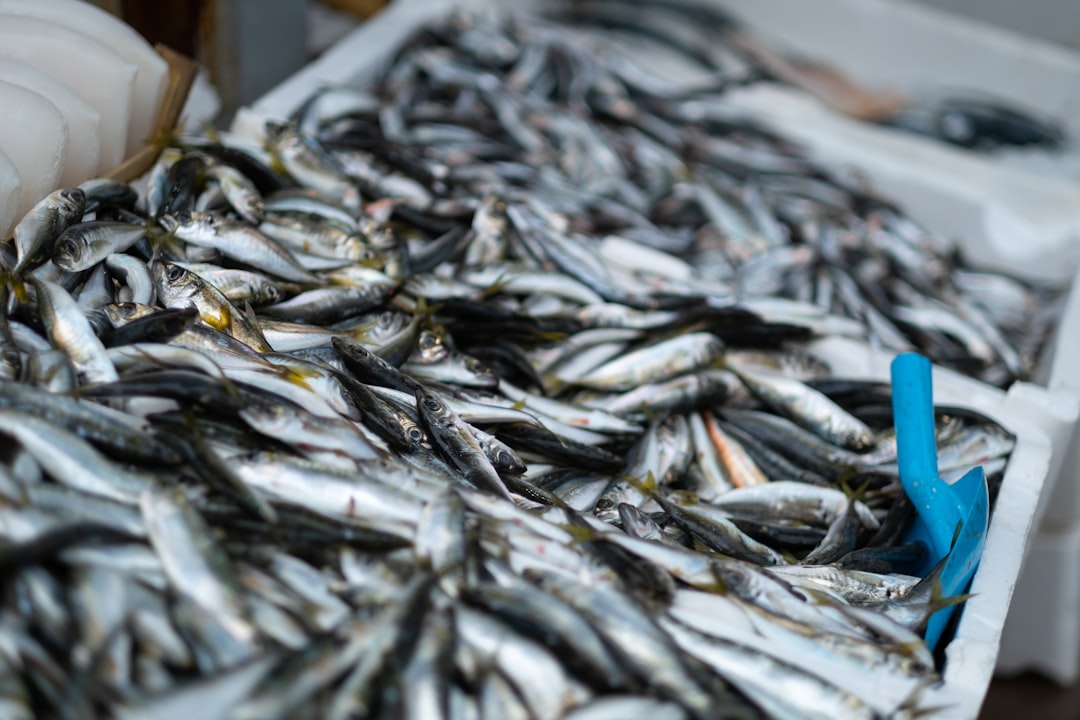
Audience segmentation is critical for wholesale seafood brands navigating complex B2B sales cycles. Distinct buyer profiles require tailored messaging and workflows to maximize campaign impact and ensure that every dollar invested targets the right businesses. For a deeper dive into structuring effective B2B segments, explore this guide to B2B PPC advertising, and reference our blog for additional strategies on driving revenue with precise targeting.
By investing in segmentation and dynamic audience management, wholesale seafood businesses can align their Google Ads strategies with real-world buying journeys, increase engagement rates, and improve overall ROI across every stage of the sales process. If you’re ready to unlock the power of intent-based segments in your campaigns, get started for free with Sona.
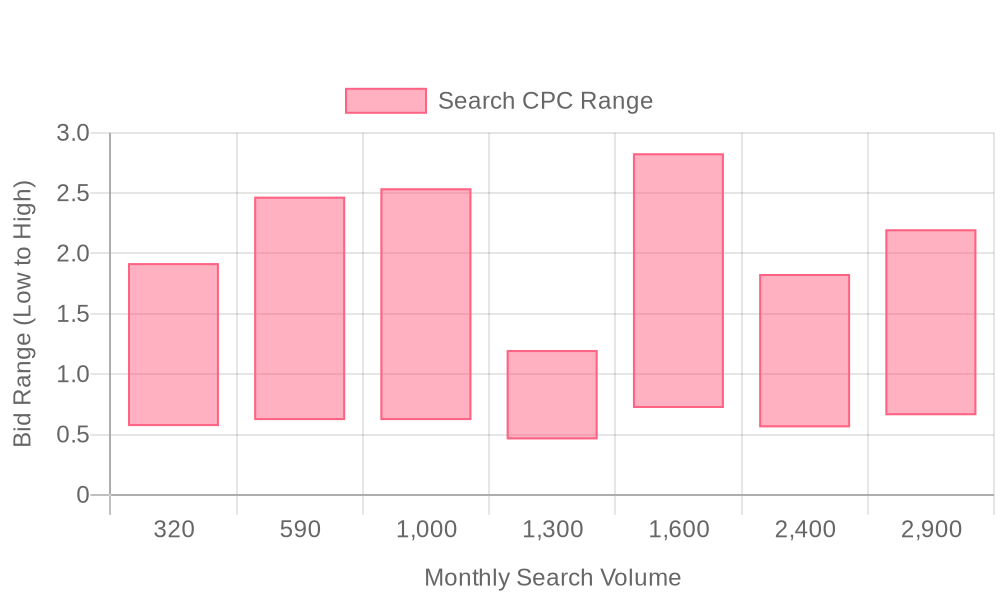
| Industry | Keyword | Monthly Search Volume | Competition Level | Low Bid | High Bid |
| Wholesale Seafood | wholesale seafood online | 320 | HIGH | 0.57 | 1.92 |
| Wholesale Seafood | bulk seafood | 590 | HIGH | 0.62 | 2.47 |
| Wholesale Seafood | wholesale fish | 1000 | HIGH | 0.62 | 2.54 |
| Wholesale Seafood | seafood wholesale to public | 1300 | HIGH | 0.46 | 1.2 |
| Wholesale Seafood | fish wholesale | 1600 | MEDIUM | 0.72 | 2.83 |
| Wholesale Seafood | wholesale seafood | 2400 | HIGH | 0.56 | 1.83 |
| Wholesale Seafood | seafood wholesale near me | 2900 | MEDIUM | 0.66 | 2.2 |
A data-driven keyword strategy is essential for B2B seafood businesses aiming to maximize their Google Ads investments. Precision in keyword selection ensures campaigns reach procurement professionals and wholesale buyers who are actively searching for reliable seafood suppliers, rather than attracting casual consumers or irrelevant traffic. For a comprehensive list of high-performing keywords tailored to wholesale suppliers, see wholesale suppliers keyword ideas.
Prioritizing high-volume and intent-driven keywords such as 'bulk seafood purchase' and 'wholesale seafood suppliers near me' targets buyers deep in the decision-making process. These terms reflect clear purchase intent and are often used by restaurants, distributors, and institutional buyers sourcing inventory at scale. For step-by-step guidance on how to set up and market an online seafood business, review how to sell fish online.
Negative keywords play a critical role in optimizing campaign efficiency by filtering out non-commercial searches, such as those from retail shoppers or recipe hunters. Building a robust negative keyword list ensures budgets are reserved for B2B searches with genuine revenue potential. For more on predictive analytics and refining intent-based segmentation, explore intent-driven retargeting.
Real-time identification and intent monitoring enable campaign managers to understand which organizations are landing on their site and what they are searching for at the keyword level. This insight allows teams to dynamically adjust keyword bids and ad copy for high-value accounts, ensuring the most relevant offers appear to those with immediate purchasing needs. As keyword performance data accumulates, CRM and advertising platforms can be seamlessly synchronized so that segmented audiences—such as repeat seafood buyers or newly engaged distributor leads—receive customized messaging and budget allocation at every stage of the funnel. To experience these capabilities, get started for free with Sona.
A strategic, methodical approach is essential for maximizing ROI and lead quality in Google Ads for wholesale seafood. By following a step-by-step framework, B2B marketers can build a sustainable pipeline of high-intent buyers, foster trust, and drive consistent conversion growth across digital channels. To explore additional methods for optimizing digital marketing strategies in the seafood sector, visit our marketing analytics blog. If you’re ready to put these best practices into action, get started for free with Sona.
Success in wholesale seafood online marketing hinges on assembling keyword lists that reflect real B2B buying intent. Begin with foundational terms such as "Google Ads for Wholesale Seafood," "bulk seafood supplier," and "restaurant seafood distributor," then expand with long-tail variations that capture niche demand. Including species-specific and certification-focused phrases like "MSC certified wholesale salmon" and "sushi-grade tuna for restaurants" ensures campaigns reach decision-makers with precise needs. For a comprehensive list of high-performing wholesale supplier keywords, review top keywords for wholesale suppliers.
Refining keyword targets demands more than spreadsheet research. Visitor identification enables marketers to analyze historical search performance, competitor gaps, and buyer journey stages. By integrating identification and real-time intent data, teams can continuously update keyword lists, ensuring spend targets only those accounts showing genuine procurement signals.
Effective B2B seafood advertising relies on ad copy that signals reliability, quality, and compliance to busy procurement professionals. Highlight trust factors such as HACCP certification, traceable sourcing, and consistent delivery schedules to differentiate from generic providers. Prominent calls-to-action, like "Request a custom quote" or "Download product specs for volume orders," incentivize engagement from serious buyers. Marketers can also learn from compelling seafood ad campaigns that have driven measurable results.
Personalization further elevates campaign performance. By leveraging real-time audience data, ad creatives can dynamically reference a prospect’s industry, regional demand, or recently viewed products. Integrating CRM and ad data ensures messaging adapts as prospects move through the funnel, aligning offers and trust signals to each buyer’s readiness and interests.
Landing pages for Google Ads strategies in seafood must align tightly with ad messaging and address the unique needs of B2B procurement teams. Clarity in product offering, transparent pricing models, and concise order forms help streamline the conversion path for wholesale seafood buyers. Including downloadable product catalogs, certification badges, and logistics details enhances credibility and shortens the qualification process. For step-by-step tactics on establishing a successful online seafood business, see how to sell fish online.
Mobile responsiveness is non-negotiable. Procurement professionals increasingly use smartphones for research and communication, so landing pages must load quickly and display seamlessly on all devices. Advanced platforms allow marketers to track which companies visit, enabling instant follow-up and tailored nurturing based on landing page interactions.
Ongoing optimization is the engine behind high-performing seafood industry PPC. Conversion tracking, including both online submissions and offline sales, provides a holistic view of campaign impact. Smart bidding algorithms refine spend allocation toward keywords, ads, and audiences that drive the highest-value opportunities, adapting in real-time as buyer behavior shifts. For industry-specific benchmarks to inform your planning, reference Google Ads ROAS for food and beverage.
Audience enrichment and lead scoring are essential for B2B lead generation in seafood. Marketers can implement dynamic audience syncs between their CRM and ad platforms, ensuring that remarketing and lookalike campaigns stay focused on qualified accounts. With robust attribution capabilities, revenue teams can confidently trace each sale or inquiry back to the precise keyword and creative, informing future strategy and maximizing every ad dollar invested.
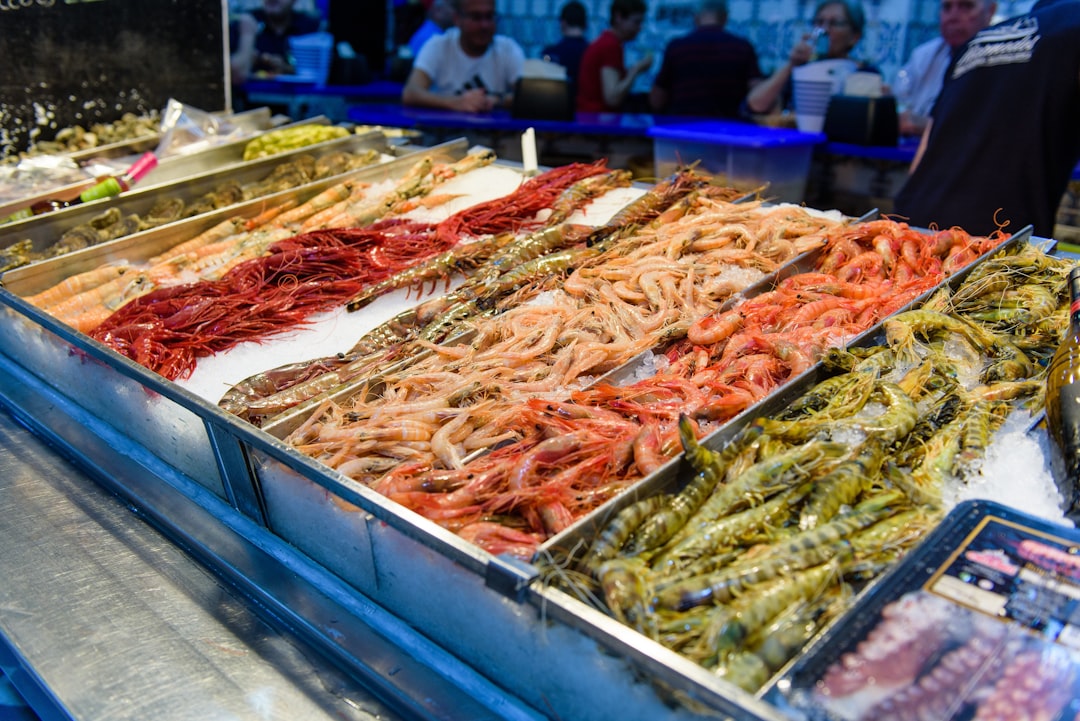
Expanding a wholesale seafood brand requires a precise blend of education, strategic targeting, and data-driven content. Leading suppliers consistently outperform competitors by leveraging insights to engage buyers at every stage, from awareness through repeat purchase.
Promoting educational content is fundamental to establishing authority and driving engagement with commercial buyers. Develop whitepapers on sustainable sourcing, regulatory compliance, and cold chain logistics, then distribute these assets through segmented campaigns targeting chefs, procurement managers, and foodservice directors. Using Google Ads for Wholesale Seafood, marketers can deliver these resources to in-market buyers who are actively searching for category-specific solutions, ensuring relevance and maximizing lead quality.
Sophisticated segmenting unlocks upsell opportunities throughout the sales funnel. By analyzing real-time behavioral data, revenue teams can identify buyers who have engaged with core product lines and present them with tailored offers, such as value-added processing or specialty seafood varieties. When platforms enable dynamic audience updates, marketing and sales efforts remain in sync as new leads progress and existing customers show intent for expansion, driving higher deal values and retention rates.
Collaborating with industry associations amplifies brand credibility and opens new channels for demand generation. Co-branded educational campaigns with established seafood councils or trade organizations help reach decision makers who trust the association’s recommendations. These partnerships also create opportunities for high-value account targeting, with enriched audience lists integrated directly into Google Ads for seafood wholesalers to drive hyper-relevant outreach.
Search query data provides a constant feedback loop for optimizing content strategy and campaign messaging. By reviewing the actual keywords used by B2B seafood buyers, marketers can quickly surface emerging industry needs, trending product types, and compliance-driven concerns. Unifying this data with CRM and website analytics allows for rapid development of targeted assets—such as landing pages for new certifications or blog posts about traceability—ensuring all marketing collateral aligns with verified buyer intent.
Localization remains essential for maximizing share-of-voice and converting high-intent leads in key markets. Deploying region-specific ad groups and localized landing experiences increases engagement among buyers who require local certifications, language support, or market-specific pricing. As campaign and CRM data unify, marketers can identify which regions deliver the highest conversion rates, shift budget to outperforming geographies, and surface new regional trends for wholesale seafood online marketing.
By integrating these strategies, B2B seafood advertising campaigns move beyond generic outreach to deliver personalized, data-driven engagement. This approach ensures that every campaign investment is optimized for growth, positioning your wholesale seafood brand as the trusted choice for buyers seeking quality, service, and innovation. Get started for free with Sona.
Navigating the complex waters of Google Ads in the wholesale seafood industry can seem daunting, yet it's an essential endeavor for reaching your B2B customers effectively. Throughout this article, we've explored strategic insights tailored to the unique demands of your niche, from targeting the right keywords to crafting compelling ad copy that resonates with your audience.
The challenges are clear: standing out in a competitive market, optimizing ad spend, and driving meaningful engagement. By leveraging Google Ads, you can overcome these hurdles, reaching potential buyers at the right time with the right message. Implementing these strategies can lead to increased visibility and heightened interest in your seafood offerings.
Imagine the transformation: a streamlined advertising process that efficiently connects you with your target market, enhancing your brand's presence and boosting sales. With the right approach, you can turn these strategies into tangible results, driving growth and expanding your business reach.
Now is the time to harness these insights and elevate your advertising game. Start for free to experience our platform and its capabilities, and see how it can revolutionize your approach to Google Ads and beyond.
Best practices include using industry-specific keyword targeting, advanced audience segmentation, and seamless lead management to capture high-value leads. Utilize search, display, remarketing, and video campaigns effectively to engage with B2B buyers at different stages of their purchasing journey.
Target B2B customers by using firmographic segmentation to isolate decision-makers and integrating behavioral signals. Develop dynamic audiences that evolve as leads move through the sales funnel, ensuring tailored messaging reaches the right contact at the right time.
Focus on high-intent keywords such as 'bulk fresh fish supplier' or 'wholesale seafood distributors,' and use negative keywords to filter out irrelevant traffic. Regularly assess search term reports to identify new opportunities and refine keyword lists.
Allocate budgets based on real-time performance data and market conditions, focusing on high-value accounts showing genuine purchase intent. Ensure budgets are reserved for B2B searches with genuine revenue potential by using negative keywords.
Measure success by monitoring metrics such as click-through rate, cost per lead, and conversion volume. Use advanced attribution models to understand which keywords and ads deliver the highest value leads and continuously adjust budgets and targeting.
Join results-focused teams combining Sona Platform automation with advanced Google Ads strategies to scale lead generation

Connect your existing CRM

Free Account Enrichment

No setup fees
No commitment required

Free consultation

Get a custom Google Ads roadmap for your business
Join results-focused teams combining Sona Platform automation with advanced Meta Ads strategies to scale lead generation

Connect your existing CRM

Free Account Enrichment

No setup fees
No commitment required

Free consultation

Get a custom Google Ads roadmap for your business
Join results-focused teams combining Sona Platform automation with advanced LinkedIn Ads strategies to scale lead generation

Connect your existing CRM

Free Account Enrichment

No setup fees
No commitment required

Free consultation

Get a custom Google Ads roadmap for your business
Join results-focused teams using Sona Platform automation to activate unified sales and marketing data, maximize ROI on marketing investments, and drive measurable growth

Connect your existing CRM

Free Account Enrichment

No setup fees
No commitment required

Free consultation

Get a custom Google Ads roadmap for your business
Over 500+ auto detailing businesses trust our platform to grow their revenue
Join results-focused teams using Sona Platform automation to activate unified sales and marketing data, maximize ROI on marketing investments, and drive measurable growth

Connect your existing CRM

Free Account Enrichment

No setup fees
No commitment required

Free consultation

Get a custom Google Ads roadmap for your business
Over 500+ auto detailing businesses trust our platform to grow their revenue
Join results-focused teams using Sona Platform automation to activate unified sales and marketing data, maximize ROI on marketing investments, and drive measurable growth

Connect your existing CRM

Free Account Enrichment

No setup fees
No commitment required

Free consultation

Get a custom Google Ads roadmap for your business
Over 500+ auto detailing businesses trust our platform to grow their revenue
Our team of experts can implement your Google Ads campaigns, then show you how Sona helps you manage exceptional campaign performance and sales.
Schedule your FREE 15-minute strategy sessionOur team of experts can implement your Meta Ads campaigns, then show you how Sona helps you manage exceptional campaign performance and sales.
Schedule your FREE 15-minute strategy sessionOur team of experts can implement your LinkedIn Ads campaigns, then show you how Sona helps you manage exceptional campaign performance and sales.
Schedule your FREE 15-minute strategy sessionOur team of experts can help improve your demand generation strategy, and can show you how advanced attribution and data activation can help you realize more opportunities and improve sales performance.
Schedule your FREE 30-minute strategy sessionOur team of experts can help improve your demand generation strategy, and can show you how advanced attribution and data activation can help you realize more opportunities and improve sales performance.
Schedule your FREE 30-minute strategy sessionOur team of experts can help improve your demand generation strategy, and can show you how advanced attribution and data activation can help you realize more opportunities and improve sales performance.
Schedule your FREE 30-minute strategy sessionOur team of experts can help improve your demand generation strategy, and can show you how advanced attribution and data activation can help you realize more opportunities and improve sales performance.
Schedule your FREE 30-minute strategy session





Launch campaigns that generate qualified leads in 30 days or less.
